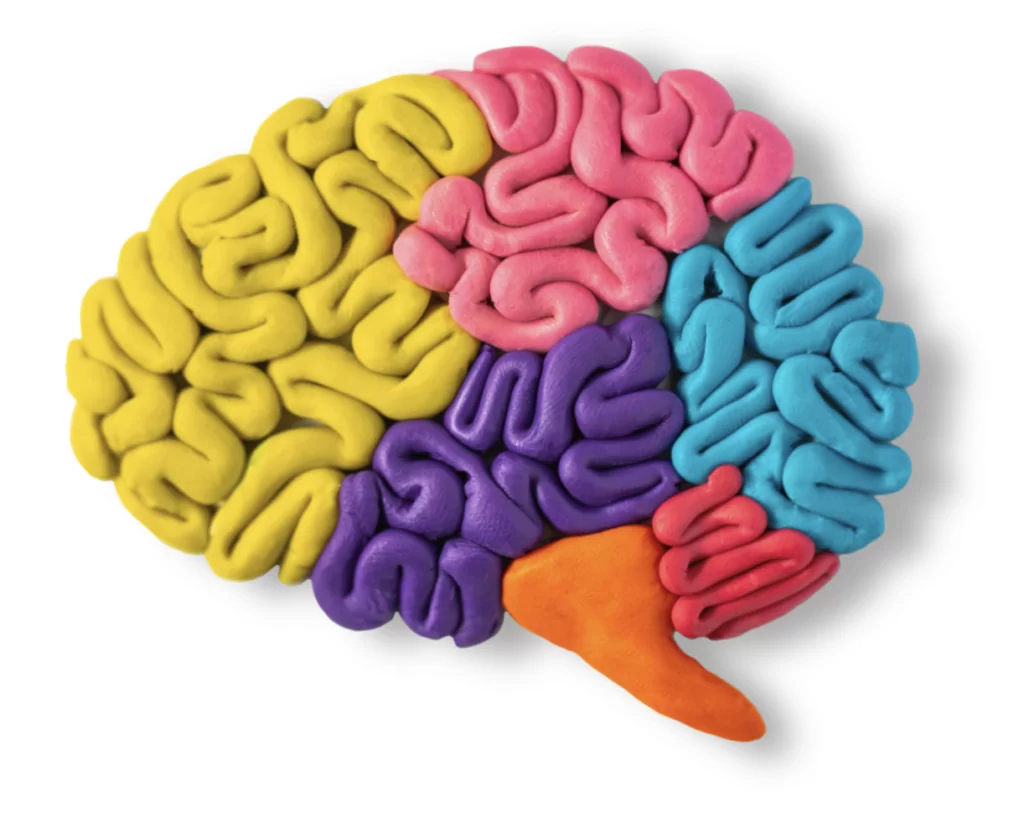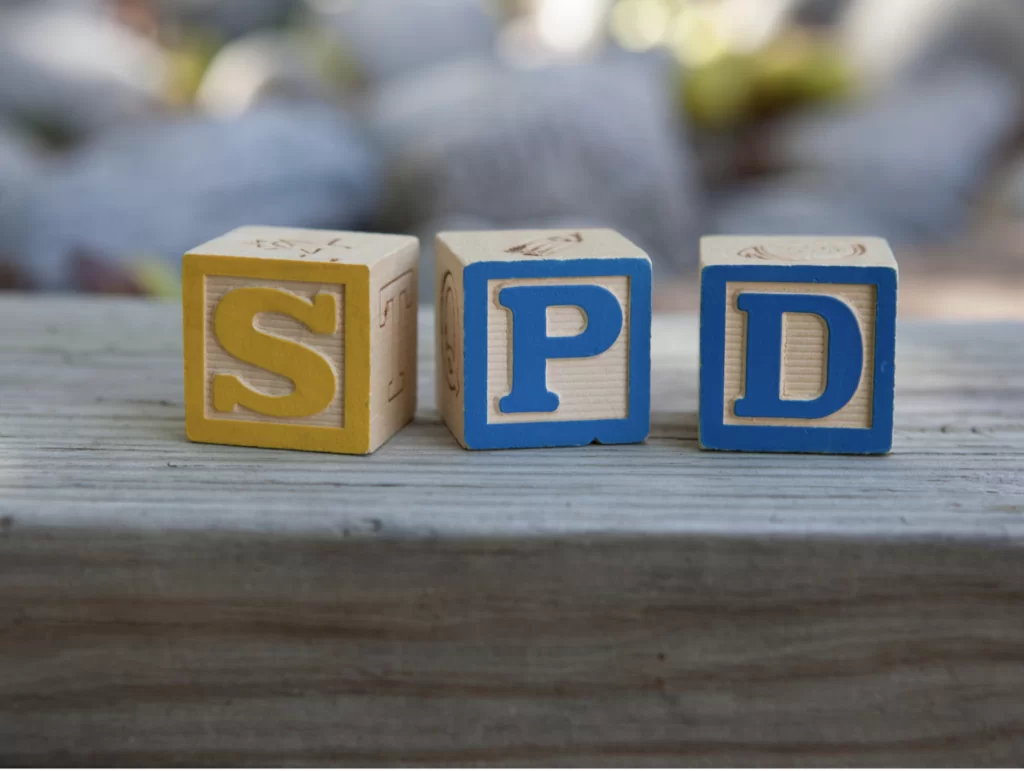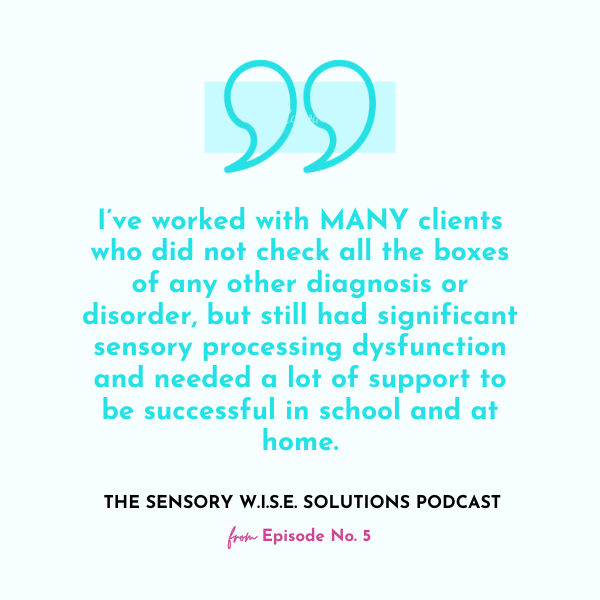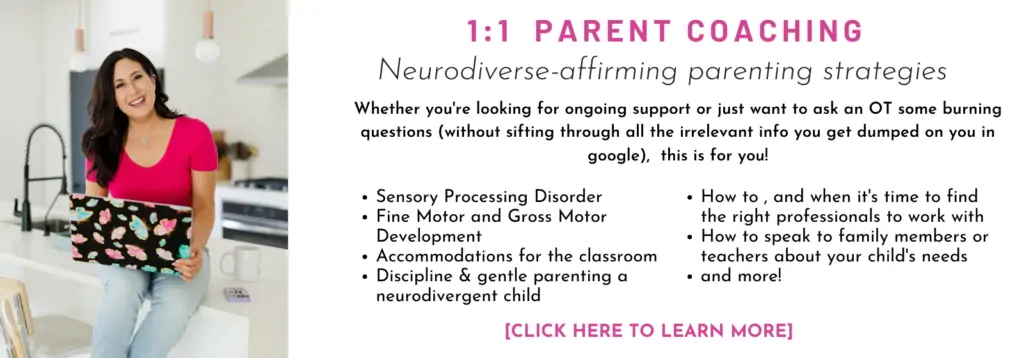Get your FREE sensory profiles cheat sheet >>click here<<
What is Sensory Processing Disorder?
Let’s talk about Sensory Processing Disorder– what it is, what it ISN’T, and what your next steps should be if you suspect your child has Sensory Processing Disorder.
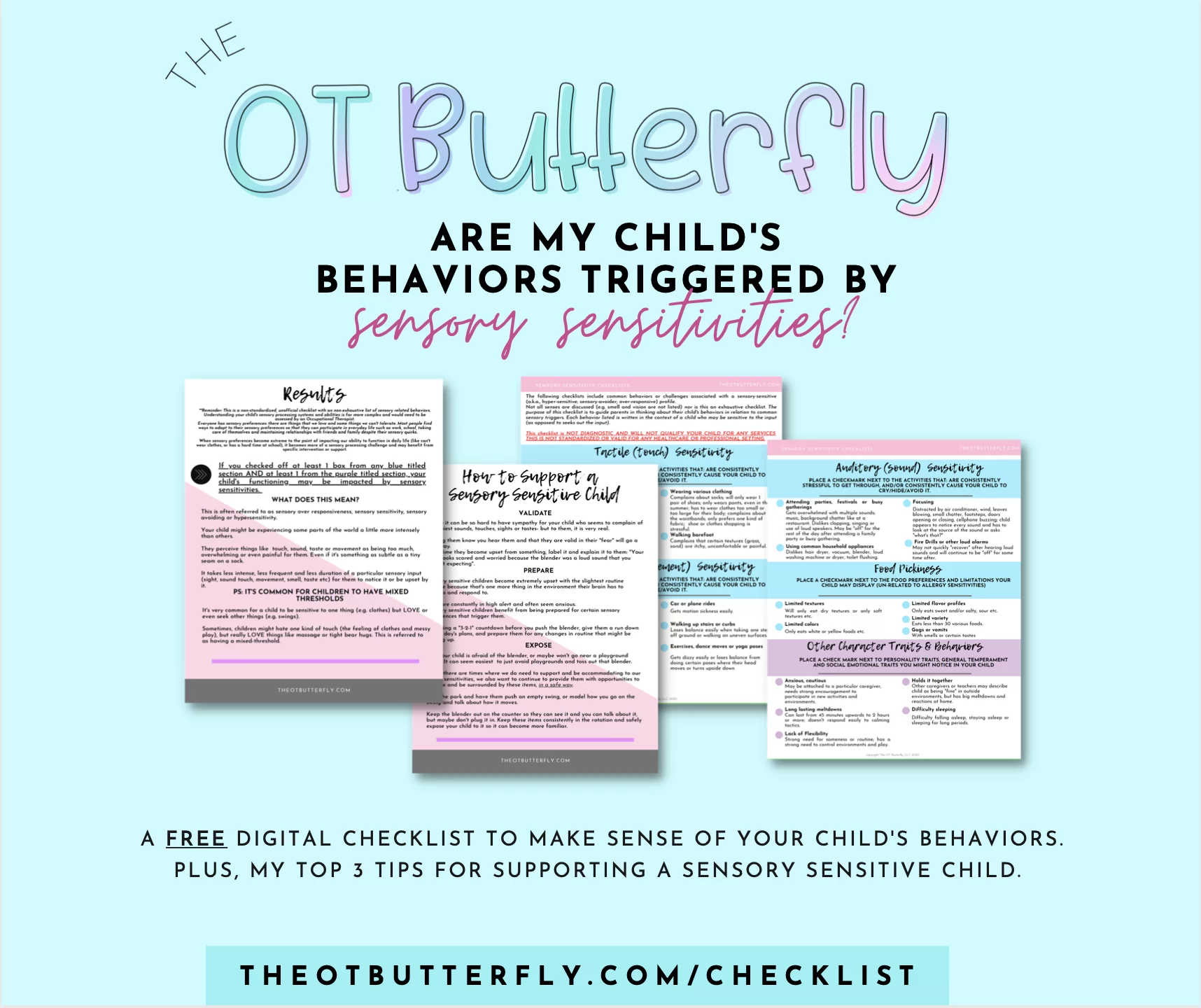
Free: Sensory Sensitive Checklist
Use this quick and easy checklist to see if your child may have some sensory sensitivities and my top 3 tips for supporting them.
What is sensory processing?
So, to start out.. Let’s talk about what Sensory processing actually is.
Sensory processing is something that every single person does, at all times of the day. It’s something that’s subconscious, something our brains do automatically.
In our environments, we are being exposed to different sensory inputs or sensory stimuli- the sights, smells, sounds, feelings, and this “information” gets sent into the brain and the brain decides what to do with this information and how our body should respond, if we need to respond, and that’s a big IF.
There’s a ton of subtle sensory information we take in at all times of the day that we don’t actually need to do anything or respond to, in fact, being able to IGNORE certain sensory stimuli is actually an adaptive sensory processing response.
Examples of sensory processing
For example, right now- I’m surrounded by bright lights, I have the feeling of the fan on my legs, I’m feeling the heat from my coffee cup in my hands, I don’t hear much except the fan.
For this moment I bring those senses and sensory inputs to the forefront of my brain as I explain them to you.
But, when I get deeper in my conversation as I record this podcast- my brain kind of goes on autopilot for those sensory inputs and filters them out for me so I don’t have to constantly bring my attention to the sound of the fan or the feeling of the heat- because noticing those sensations are not necessary for my survival and my functioning.
Let’s take another example- let’s say I’m here, focused, and my brain is tuning out all of that “irrelevant” sensory input- the lights, the sound of the fan, etc- but then I start to smell something burning.

Immediately, my “this is not important” filter for sensory input gets turned off and my brain focuses- what is that smell? Where is it coming from?
My heart might start to race, and I lose track of my words here on the podcast and I would stop what I’m doing to find out.
Taking in that smell, identifying it as a potential threat, and then doing something about it is all sensory processing.
What about something as subtle as walking outside going for a hike?
Every step I take, every rock or crevice I walk over.. My brain is taking in the sights of my surroundings, watching out for things to step over, and my vestibular system and proprioceptive system are taking in information about my body’s position in the environment.
Every subtle mis-step I may make, my body knows to adjust my posture so I’m upright and avoid falling and losing my balance. That’s sensory processing.
What other daily tasks take efficient sensory processing skills? Literally everything! Taking a shower, tying shoes, eating, riding a bike, reading, writing, doing the dishes, playing hide and seek… I could go on and on!
Sensory Processing Challenges
The purpose of sensory processing is to literally keep us: alive and functioning.
When you have a child who has sensory processing challenges, or a sensory processing disorder- these signals in their brains that tell them what the sensory input is and what to do with it, can kind of get mixed up, they take a different route and so the child’s outward response might look different.

We’ll talk about all the different profiles of sensory processing disorder you can have in future episodes, but I do want to leave you with probably one of the most asked question I get in my instagram DMS, especially lately.
SPD Diagnosis
People want to know what’s the deal with the whole SPD diagnosis thing- is it real? How do I get my kid diagnosed properly so I can get them treated?
First of all- Sensory Processing Disorder (SPD) is not a stand-alone diagnosis in the DSM (The Diagnostic and Statistical Manual of Mental Disorders), the official manual that mental health specialists and behavioral health specialists use to diagnose mental illnesses and cognitive disabilities. SPD is currently only discussed in the context of other bigger umbrella disorders, such as Autism, ADHD, or Anxiety.
Parents are always confused by this because they hear people say things like “this child has SPD” even if they don’t have another diagnosis like Autism or ADHD.
This is because, even though SPD doesn’t have an official diagnosis code, it doesn’t have it’s own recognition in the manual that insurance refers to for reimbursement… there is still widespread (although…. Not widespread enough if you ask most parents or OTs) knowledge and research that shows SPD’s existence and impact on children.
I’ve worked with MANY clients who did not check all the boxes of any other diagnosis or disorder, but still had significant sensory processing dysfunction and needed a lot of support to be successful in school and at home.

So the question “who can I go to to get an SPD diagnosis for my child”? Is hard to answer. The answer is no one.
No one can give you an official “sensory processing disorder code 123” that’s billable to insurance.
You CAN find professionals who will diagnose Anxiety, ADHD, Autism, Fetal Alcohol Spectrum Disorders, and within those diagnoses, SPD is more recognized.
You CAN find professionals, like OTs who can assess your child’s sensory processing abilities and determine whether or not they would benefit from support or intervention.
But, please be aware- no OTs can actually diagnose.
It’s not within our scope of practice at all. So if your OT says your child has SPD, it’s more like your OT has determined that your child has significant sensory processing delays and needs intervention.
I know it sounds confusing but the important thing for you to know and differentiate between is that “SPD” is a real thing that exists, there is no question about it.
There are people, there are children who exhibit significant sensory processing challenges that impede their ability to function in daily life, who don’t happen to also have ADHD or Autism or other diagnoses.
The problem is with the healthcare system and the recognition of this disorder as a standalone disorder, and is what creates a huge barrier for parents trying to get their child support. It is NOT a stand alone diagnosis, YET… but there is hope.
How to get support
Don’t get hung up on getting a formal SPD diagnosis- for one, like I mentioned, it doesn’t exist. If you suspect your child has sensory processing challenges, here are some ways to seek support.
- Go directly to an OT- search for a private sensory integration clinic and talk to an OT there. Ask if they offer free screenings or if you could just talk to them over the phone about your concerns, and see if they can help you with setting up your evaluation and find out what you might need from your insurance or doctor before you get here.
- If you’re child is under 3 and you live in the US, you can go through the local regional center (literally search “regional center + your county”) and you can get your child assessed for free (but you have to be explicit about wanting sensory processing skills assessed)
- If you’re not sure what exactly is going on but you do have concerns about your child’s behavior, you can search for a Developmental pediatrician (you might ask your pediatrician for a referral).
- Last but certainly not least, it’s always a good idea to loop your pediatrician in on things and ask for their opinion. But, not all pediatricians are completely on board with hearing out “sensory concerns” that aren’t tied to Autism or other developmental diagnoses. Many parents get brushed off, so just be prepared to advocate and provide lots of objective facts, information and even pictures/video of your concerns if you can.
Interested in more ways to help your sensitive child?
Click below to read Sensory Dysregulation: What it is and How to Help.
Alright, that’s it for this episode! Lots of great info here, if it was helpful for you I’d appreciate it if you let me know by leaving me a review! I’ll be back next week with more SPD tips and info!
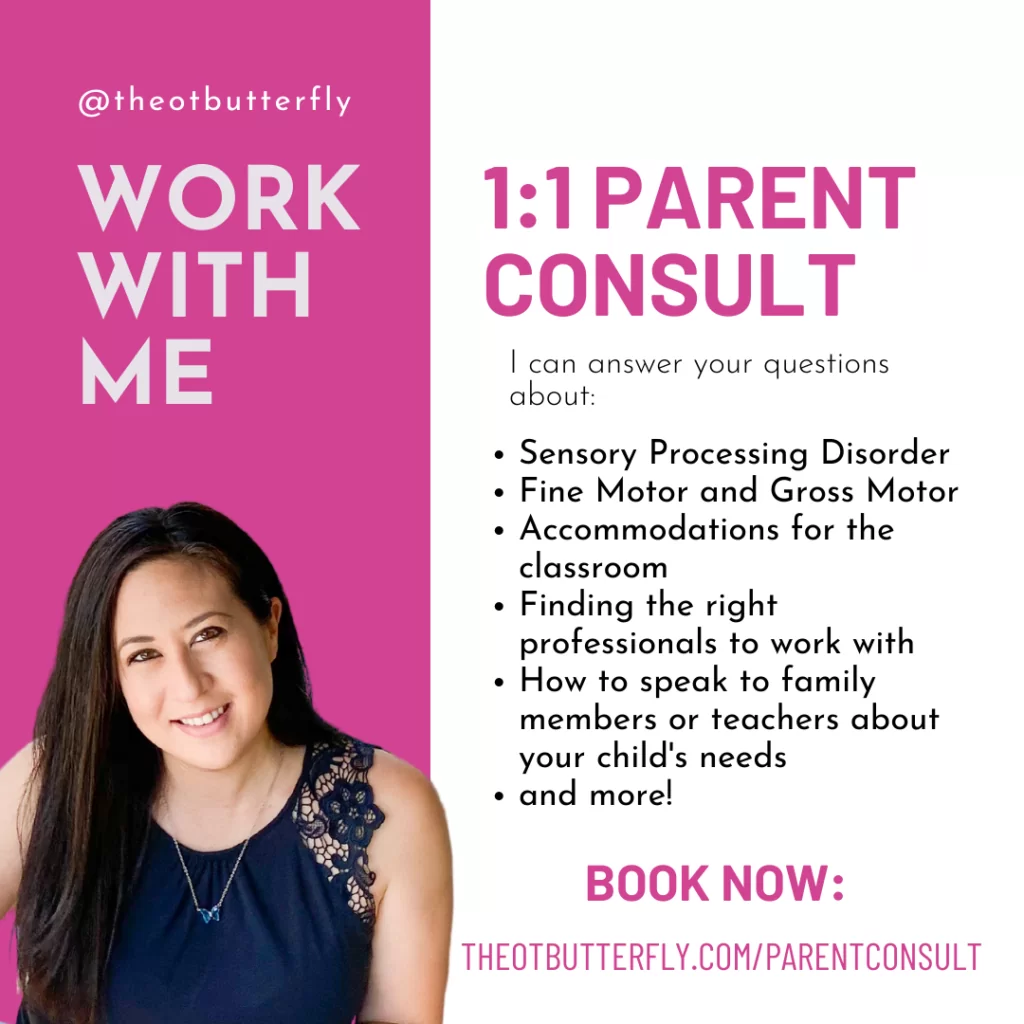
Looking for more guidance on how you can support your child’s sensory needs? Let’s work together. I specialize in helping parents understand how sensory impacts behavior and how you can still use gentle parenting techniques for neurodivergent children.
Links
instagram: @TheOTButterfly / www.instagram.com/theotbutterfly
Website/blog: www.theotbutterfly.com
Email: LauraPetix@TheOTButterfly.com
Work with me: www.theotbutterfly.com/parentconsult
More SPD parent resources: www.sensorywisesolutions.com


